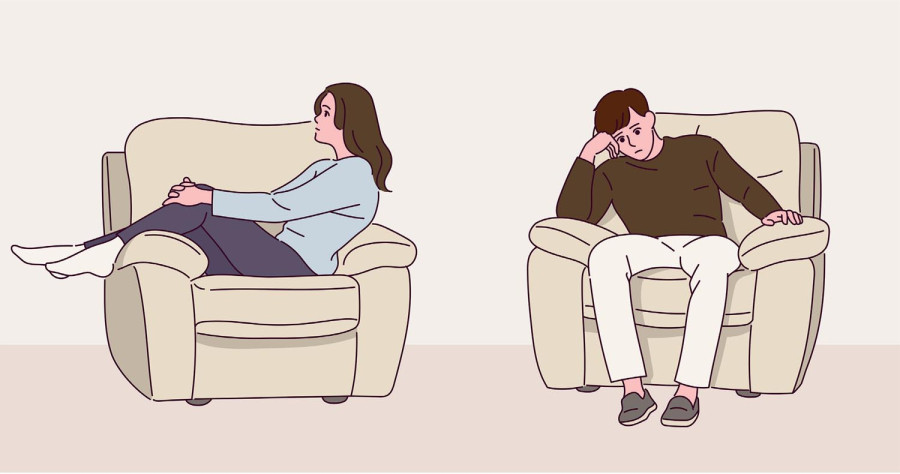Culture & Lifestyle
A peek into attachment styles
Understanding an individual’s childhood is crucial to deciphering the style of attachment they have developed.
Sanskriti Pokharel
Why are some people self-reliant, calm, and distant in relationships, while others constantly need attention, validation, and reassurance? According to the attachment theory developed by J Bowlby and MS Ainsworth, different people have different attachment styles.
Understanding an individual's childhood is crucial to deciphering the style of attachment they have developed. Psychologist Anjana Das Pariyar, counsellor at Adhyayan School and Psychology Lecturer at Premier College, illuminates this topic.
What are the different attachment style types, and how do they develop in early childhood?
Understanding attachment styles is essential to know how people establish and maintain relationships.
One of the styles is secure attachment. Children with secure attachment feel confident that their caregiver will meet their needs. They are comfortable with intimacy and trust others easily. This attachment typically develops when caregivers are consistently responsive and sensitive to the child’s needs.
The second is anxious-ambivalent (preoccupied) attachment. Children with this attachment often feel uncertain about their caregiver’s availability and may become overly dependent.
They might show high levels of distress when separated from their caregiver and have difficulty calming down upon reunion. This style often results from inconsistent caregiving, where the caregiver is sometimes responsive and other times neglectful or intrusive.
The third is avoidant attachment. Children with this attachment tend to be self-reliant and emotionally distant. They may avoid seeking comfort from caregivers and appear indifferent to separation or reunion. This attachment style can develop when caregivers are consistently unresponsive or dismissive of the child’s needs.
Children with disorganised attachment show a mix of avoidant and anxious behaviours. They may seem confused or apprehensive about the caregiver and display contradictory actions, such as approaching the caregiver but then retreating.
This style often arises from caregivers who are frightening, abusive, or inconsistent in their responses. The child needs clarification about how to relate to the caregiver, leading to disorganised behaviour patterns.
What is the relationship between attachment styles and mental health?
Early childhood attachment patterns have a significant impact on an individual's mental health throughout their lives. Although the connections between attachment patterns and mental health might be complicated.

Consider Jane and Mark, two people who had distinct early attachment experiences. Jane was raised in a loving home with always available and responsive caregivers. Because of this safe relationship, she developed a strong sense of trust and self-worth. These early experiences strengthened her mental fortitude and general well-being as she grew older.
She has a better time maintaining a positive self-image, managing stress, and forming healthy relationships—all essential for mental wellness.
Mark, however, had a distinct experience. His caregivers were usually erratic; they were occasionally alert but more often unresponsive. Anxious-ambivalent attachment style resulted from this. As an adult, Mark has relationship insecurity frequently, wanting validation all the time and worrying about being abandoned.
Depression and anxiety disorders are two mental health issues that this persistent uneasiness may exacerbate.
How do attachment styles influence adult relationships, both romantic and non-romantic?
Attachment styles significantly shape romantic and non-romantic adult relationships. For example, people with a secure attachment style—shaped by responsive and consistent parenting during childhood—tend to build helpful, wholesome relationships. They are frank, talkative, and at ease with closeness in love relationships. They also develop dependable friendships, characterised by empathy and encouragement of one another.
However, those with an anxious attachment style—frequently the consequence of uneven caregiving—might look to their relationships for continual validation. They may be highly reliant on their friends and lovers and clinging, constantly fearing abandonment. As a result, their relationships may become tense and unstable.
People who struggle with intimacy are often those with an avoidant attachment style, which they developed as a result of distant or negligent caregiving.
They may maintain a relationship gap and cherish their independence since they find it difficult to trust people; this may lead to surface-level relationships, which makes building solid and long-lasting attachments challenging.
What practical advice would you give couples struggling due to differing attachment styles?
Different attachment patterns can cause problems in a relationship, but recognising and resolving these differences can result in a happier and more satisfying union.
Couples with trouble reconciling their different attachment styles can learn about each other’s attachment patterns and how they affect their demands and behaviours in a partnership. They can talk about how these styles impact their feelings and responses.
I would also advise them to validate each other’s feelings and reach an agreement that respects their demands while also meeting the needs of others.
How can an individual with avoidant attachment work to have a secure attachment style?
First, one should gain self-awareness through introspection or counselling to understand their attachment patterns and transition from an avoidant to a secure attachment style.
Developing emotional intelligence and understanding how to communicate emotions is essential. It’s beneficial to progressively share private thoughts with people you can trust, fostering openness and trust. It's also critical to foster connections of support and dispel myths about intimacy. Ultimately, since transformation requires time and work, self-compassion and patience are essential.




 19.12°C Kathmandu
19.12°C Kathmandu














